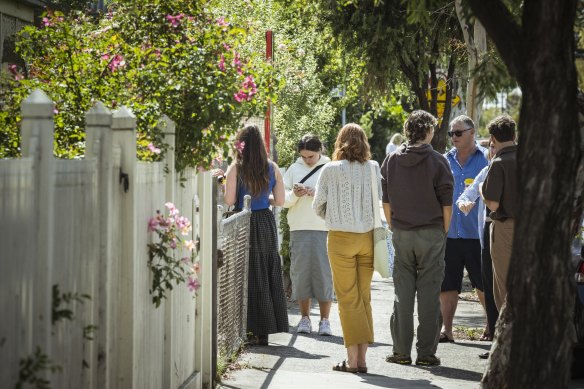[ad_1]
She predicted the federal government would include more funding for built-to-rent projects to counter dwindling private investment in this week’s budget.
Loading
“But it’s just not really a solution that will lead to the 1.2 million homes that they’re hoping to see over the next five years,” she said.
Conisbee said that although high interest rates would eventually reduce inflation, the price hikes had pushed many investors out of the market and put further strain on the cost of housing.
“Rents push up, inflation pushes up, rates push up and then people won’t invest in property, so then we continue to see rents go up – it is a circular problem that we just can’t get out of very quickly,” Conisbee said.
She said a “quick solution” would be to give investors more incentive to enter the market, but that there were political ramifications with that.
Behavioural hangovers from the pandemic were also contributing to booming rents.

Tenants are under pressure from rising rents.Credit: Chris Hopkins
AMP chief economist Shane Oliver said the number of people per household declined during the pandemic, as people opted for their own rentals rather than living in a share house.
“It led to people not wanting to share, but they could also afford not to share,” Oliver said.
This caused a “spreading out” of people who would usually live together, he said, taking up more of the available properties than was the case pre-2020.
Loading
“The after-effect of that banged into population growth, when migration and student arrivals started again,” he said.
“Odds are we will see people sharing, moving back with parents or staying at home for longer.”
If people did start to form larger households, it could take some of the heat out of the rental market, Oliver said, but prices would still not fall, just stabilise.
“To get a fall, you need more supply,” he said. “We’ve got to go back to a unit-building boom.
“In the period between 2016 and 2020 we were building a large number of units – people were regularly doing crane counts in the major cities.”
He said during that time, rents were either holding steady or seeing only minimal increases, as most of the new units became rentals.
Conisbee said there was definitely an “expansion into space” during the pandemic, but that people tended to favour houses over units at that time.
“Student apartment locations emptied out, and we had extremely high vacancies in places like Melbourne CBD and Carlton,” she said.
Conisbee said now that students were back at tertiary institutions and migration had picked up, renters were forced to rethink their living arrangements to bring down costs.
“We kind of have to go back to where we were pre-COVID and have people move back in together – which is happening – we have seen a rise again in average household size because obviously the quickest way to cut your rent is to find someone to share your house,” she said.
[ad_2]
Source link


